
FalkorDB
A super fast Graph Database uses GraphBLAS under the hood for its sparse adjacency matrix graph representation. Our goal is to provide the best Knowledge Graph for LLM (GraphRAG).
Stars: 1476
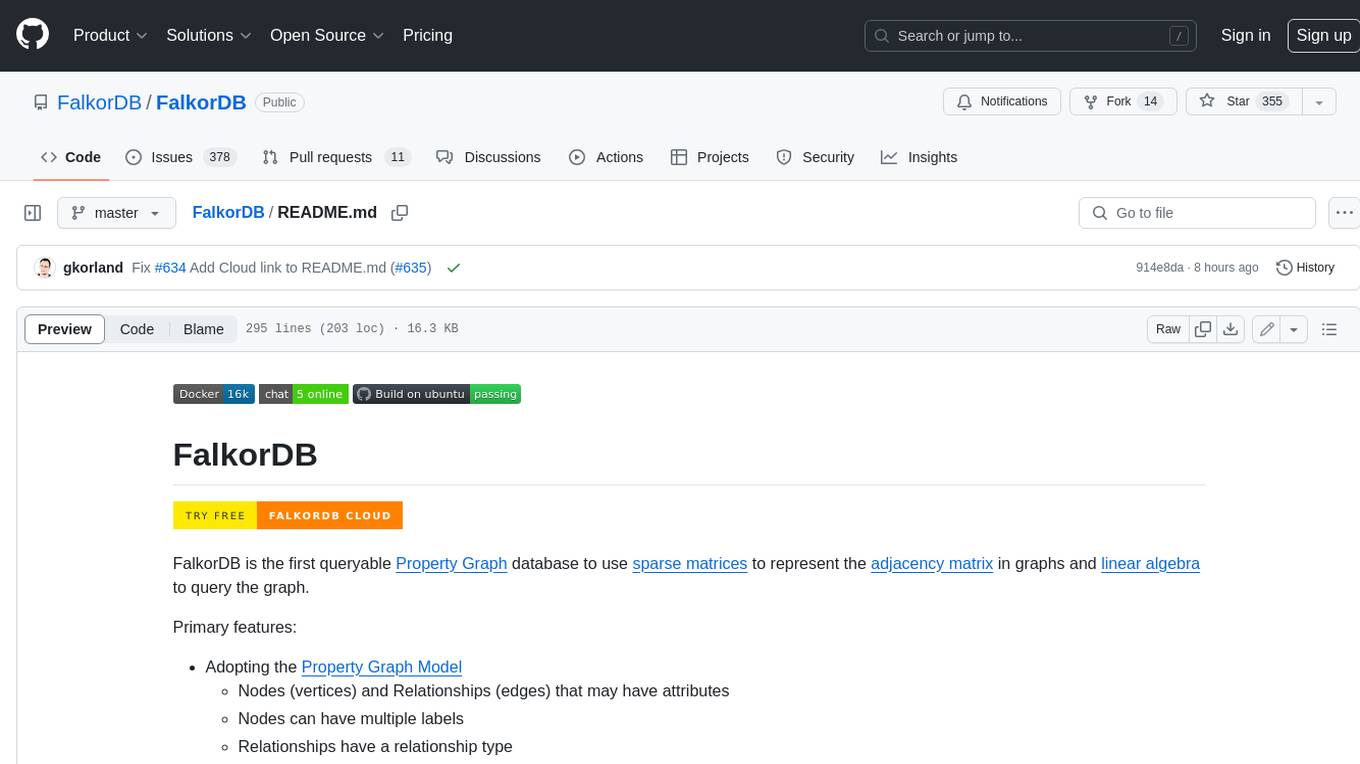
FalkorDB is the first queryable Property Graph database to use sparse matrices to represent the adjacency matrix in graphs and linear algebra to query the graph. Primary features: * Adopting the Property Graph Model * Nodes (vertices) and Relationships (edges) that may have attributes * Nodes can have multiple labels * Relationships have a relationship type * Graphs represented as sparse adjacency matrices * OpenCypher with proprietary extensions as a query language * Queries are translated into linear algebra expressions
README:
Our goal is to build a high-performance Knowledge Graph tailored for Large Language Models (LLMs), prioritizing exceptionally low latency to ensure fast and efficient information delivery through our Graph Database.
🆕 FalkorDB is the first queryable Property Graph database to leverage sparse matrices for representing the adjacency matrix in graphs and linear algebra for querying.
-
Sparse Matrix Representation: Utilizes sparse matrices to represent adjacency matrices, optimizing storage and performance.
-
Linear Algebra Querying: Employs linear algebra for query execution, enhancing computational efficiency.
-
Property Graph Model Compliance: Supports nodes and relationships with attributes, adhering to the Property Graph Model.
-
OpenCypher Support: Compatible with OpenCypher query language, including proprietary extensions for advanced querying capabilities.
Explore FalkorDB in action by visiting the Demos.
Official Docs | Clients | Commands | 📊 Latest Performance Benchmarks
-
Discussions: Join our community discussions on GitHub Discussions to ask questions, share ideas, and connect with other users.
-
Contributing: We welcome contributions! Please see our Contributing Guide for more details.
-
License: This project is licensed under the Server Side Public License v1 (SSPLv1). See the LICENSE file for details.
To quickly try out FalkorDB, launch an instance using docker:
docker run -p 6379:6379 -p 3000:3000 -it --rm -v ./data:/var/lib/falkordb/data falkordb/falkordb
Then, open your browser and navigate to http://localhost:3000.
You can also interact with FalkorDB using any of the supported Client Libraries
In this example, we'll use the FalkorDB Python client to create a small graph representing a subset of motorcycle riders and teams participating in the MotoGP league. After creating the graph, we'll query the data to explore its structure and relationships.
from falkordb import FalkorDB
# Connect to FalkorDB
db = FalkorDB(host='localhost', port=6379)
# Create the 'MotoGP' graph
g = db.select_graph('MotoGP')
g.query("""CREATE (:Rider {name:'Valentino Rossi'})-[:rides]->(:Team {name:'Yamaha'}),
(:Rider {name:'Dani Pedrosa'})-[:rides]->(:Team {name:'Honda'}),
(:Rider {name:'Andrea Dovizioso'})-[:rides]->(:Team {name:'Ducati'})""")
# Query which riders represents Yamaha?
res = g.query("""MATCH (r:Rider)-[:rides]->(t:Team)
WHERE t.name = 'Yamaha'
RETURN r.name""")
for row in res.result_set:
print(row[0])
# Prints: "Valentino Rossi"
# Query how many riders represent team Ducati ?
res = g.query("""MATCH (r:Rider)-[:rides]->(t:Team {name:'Ducati'})
RETURN count(r)""")
print(res.result_set[0][0])
# Prints: 1Make sure to complete these requirements:
1️⃣ The FalkorDB repository: git clone --recurse-submodules -j8 https://github.com/FalkorDB/FalkorDB.git
On Ubuntu Linux, run:
apt-get install build-essential cmake m4 automake peg libtool autoconf python3 python3-pip
On OS X, verify that
homebrewis installed and run:brew install cmake m4 automake peg libtool autoconf.The version of Clang that ships with the OS X toolchain does not support OpenMP, which is a requirement for FalkorDB. One way to resolve this is to run
brew install gcc g++and follow the on-screen instructions to update the symbolic links. Note that this is a system-wide change - setting the environment variables forCCandCXXwill work if that is not an option.
2️⃣ Build by running make in the project's directory.
Congratulations! You can find the compiled binary at bin/<arch>/src/falkordb.so.
Start by installing the required Python packages by running pip install -r requirements.txt from the tests directory.
Note: If you've got
redis-serverin PATH, just invokemake test. Otherwise, invokeREDIS_SERVER=<redis-server-location> make test. For a more verbose output, runmake test V=1.
The FalkorDB build system runs within docker. For detailed instructions on building, please see here.
FalkorDB is hosted by Redis, so you'll first have to load it as a Module to a Redis server.
Note: Redis 7.4 is required for the latest FalkorDB version.
💡 We recommend having Redis load FalkorDB during startup by adding the following to your redis.conf file:
loadmodule /path/to/module/src/falkordb.so
In the line above, replace /path/to/module/src/falkordb.so with the actual path to FalkorDB's library.
If Redis is running as a service, you must ensure that the redis user (default) has the necessary file/folder permissions
to access falkordb.so.
Alternatively, you can have Redis load FalkorDB using the following command line argument syntax:
~/$ redis-server --loadmodule /path/to/module/src/falkordb.soLastly, you can also use the MODULE LOAD command. Note, however, that MODULE LOAD is a dangerous command and may be blocked/deprecated in the future due to security considerations.
Once you've successfully loaded FalkorDB your Redis log should see lines similar to:
...
30707:M 20 Jun 02:08:12.314 * Module 'graph' loaded from <redacted>/src/falkordb.so
...
If the server fails to launch with output similar to:
# Module /usr/lib/redis/modules/falkordb.so failed to load: libgomp.so.1: cannot open shared object file: No such file or directory
# Can't load module from /usr/lib/redis/modules/falkordb.so: server aborting
The system is missing the run-time dependency OpenMP. This can be installed on Ubuntu with apt-get install libgomp1, on RHEL/CentOS with yum install libgomp, and on OSX with brew install libomp.
You can call FalkorDB's commands from any Redis client. Here are several methods:
$ redis-cli
127.0.0.1:6379> GRAPH.QUERY social "CREATE (:person {name: 'roi', age: 33, gender: 'male', status: 'married'})"You can interact with FalkorDB using your client's ability to send raw Redis commands.
Note: Depending on your client of choice, the exact method for doing that may vary.
This code snippet shows how to use FalkorDB with from Python using falkordb-py:
from falkordb import FalkorDB
# Connect to FalkorDB
db = FalkorDB(host='localhost', port=6379)
# Select the social graph
g = db.select_graph('social')
reply = g.query("CREATE (:person {name:'roi', age:33, gender:'male', status:'married'})")Note: Some languages have client libraries that provide support for FalkorDB's commands:
| Project | Language | License | Author | Stars | Package | Comment |
|---|---|---|---|---|---|---|
| jfalkordb | Java | BSD | FalkorDB |  |
Maven | |
| falkordb-py | Python | MIT | FalkorDB |  |
pypi | |
| falkordb-ts | Node.JS | MIT | FalkorDB |  |
npm | |
| falkordb-rs | Rust | MIT | FalkorDB |  |
Crate | |
| falkordb-go | Go | BSD | FalkorDB |  |
GitHub | |
| NFalkorDB | C# | Apache-2.0 | FalkorDB |  |
nuget |
| Project | Language | License | Author | Stars | Package | Comment |
|---|---|---|---|---|---|---|
| nredisstack | .NET | MIT | Redis |  |
nuget | |
| redisgraph-rb | Ruby | BSD | Redis |  |
GitHub | |
| redgraph | Ruby | MIT | pzac |  |
GitHub | |
| redisgraph-go | Go | BSD | Redis |  |
GitHub | |
| rueidis | Go | Apache 2.0 | Rueian |  |
GitHub | |
| ioredisgraph | JavaScript | ISC | Jonah |  |
GitHub | |
| @hydre/rgraph | JavaScript | MIT | Sceat |  |
GitHub | |
| php-redis-graph | PHP | MIT | KJDev |  |
GitHub | |
| redisgraph_php | PHP | MIT | jpbourbon |  |
GitHub | |
| redisgraph-ex | Elixir | MIT | crflynn |  |
GitHub | |
| redisgraph-rs | Rust | MIT | malte-v |  |
GitHub | |
| redis_graph | Rust | BSD | tompro |  |
GitHub | |
| rustis | Rust | MIT | Dahomey Technologies |  |
Crate | Documentation |
| NRedisGraph | C# | BSD | tombatron |  |
GitHub | |
| RedisGraph.jl | Julia | MIT | xyxel |  |
GitHub |
Licensed under the Server Side Public License v1 (SSPLv1). See LICENSE.
⭐️ If you find this repository helpful, please consider giving it a star!
For Tasks:
Click tags to check more tools for each tasksFor Jobs:
Alternative AI tools for FalkorDB
Similar Open Source Tools

FalkorDB
FalkorDB is the first queryable Property Graph database to use sparse matrices to represent the adjacency matrix in graphs and linear algebra to query the graph. Primary features: * Adopting the Property Graph Model * Nodes (vertices) and Relationships (edges) that may have attributes * Nodes can have multiple labels * Relationships have a relationship type * Graphs represented as sparse adjacency matrices * OpenCypher with proprietary extensions as a query language * Queries are translated into linear algebra expressions
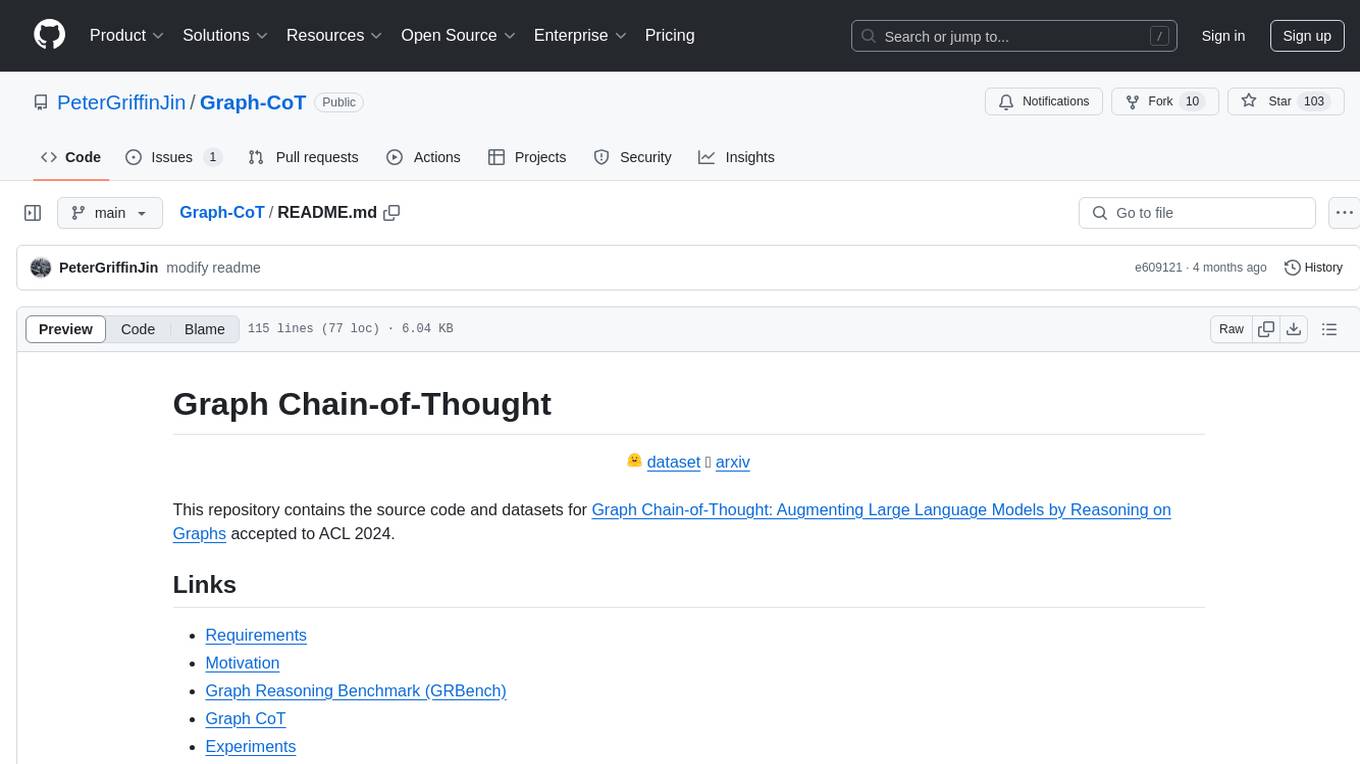
Graph-CoT
This repository contains the source code and datasets for Graph Chain-of-Thought: Augmenting Large Language Models by Reasoning on Graphs accepted to ACL 2024. It proposes a framework called Graph Chain-of-thought (Graph-CoT) to enable Language Models to traverse graphs step-by-step for reasoning, interaction, and execution. The motivation is to alleviate hallucination issues in Language Models by augmenting them with structured knowledge sources represented as graphs.
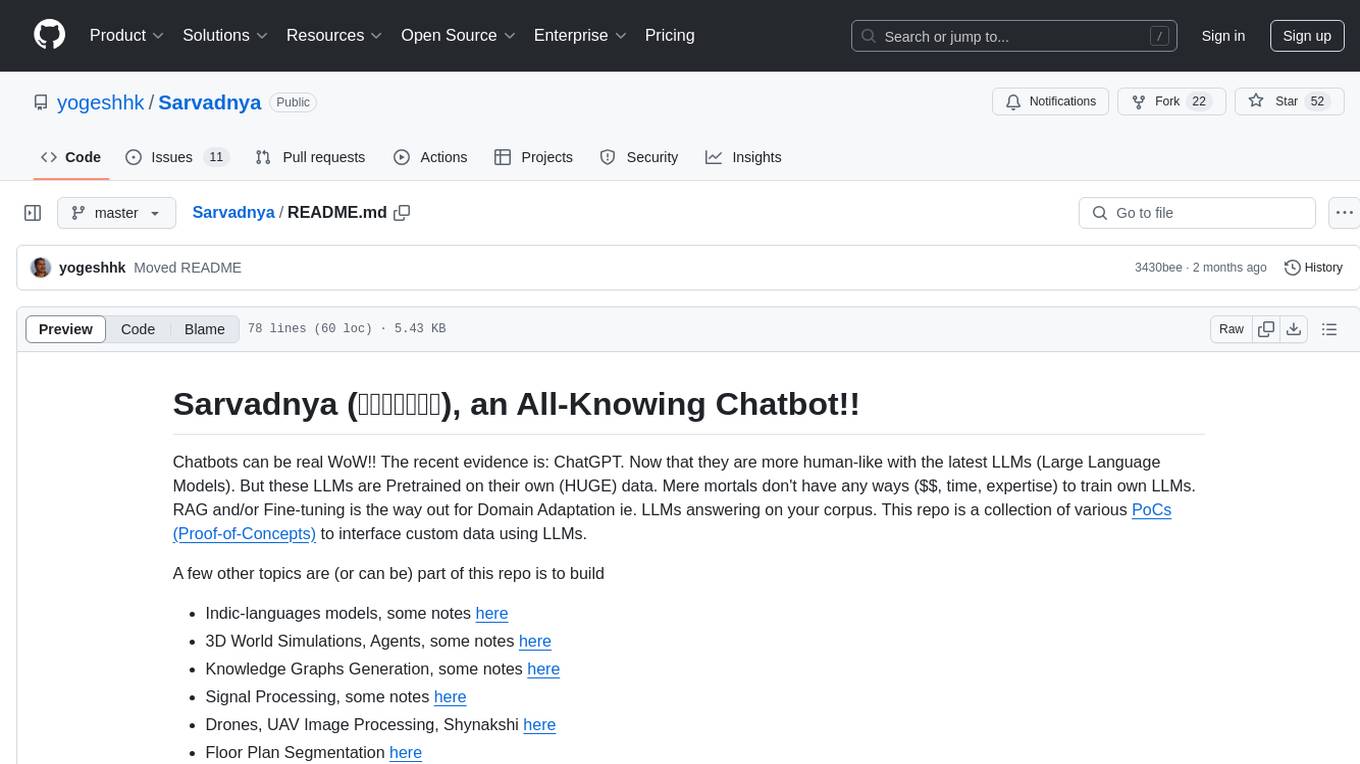
Sarvadnya
Sarvadnya is a repository focused on interfacing custom data using Large Language Models (LLMs) through Proof-of-Concepts (PoCs) like Retrieval Augmented Generation (RAG) and Fine-Tuning. It aims to enable domain adaptation for LLMs to answer on user-specific corpora. The repository also covers topics such as Indic-languages models, 3D World Simulations, Knowledge Graphs Generation, Signal Processing, Drones, UAV Image Processing, and Floor Plan Segmentation. It provides insights into building chatbots of various modalities, preparing videos, and creating content for different platforms like Medium, LinkedIn, and YouTube. The tech stacks involved range from enterprise solutions like Google Doc AI and Microsoft Azure Language AI Services to open-source tools like Langchain and HuggingFace.
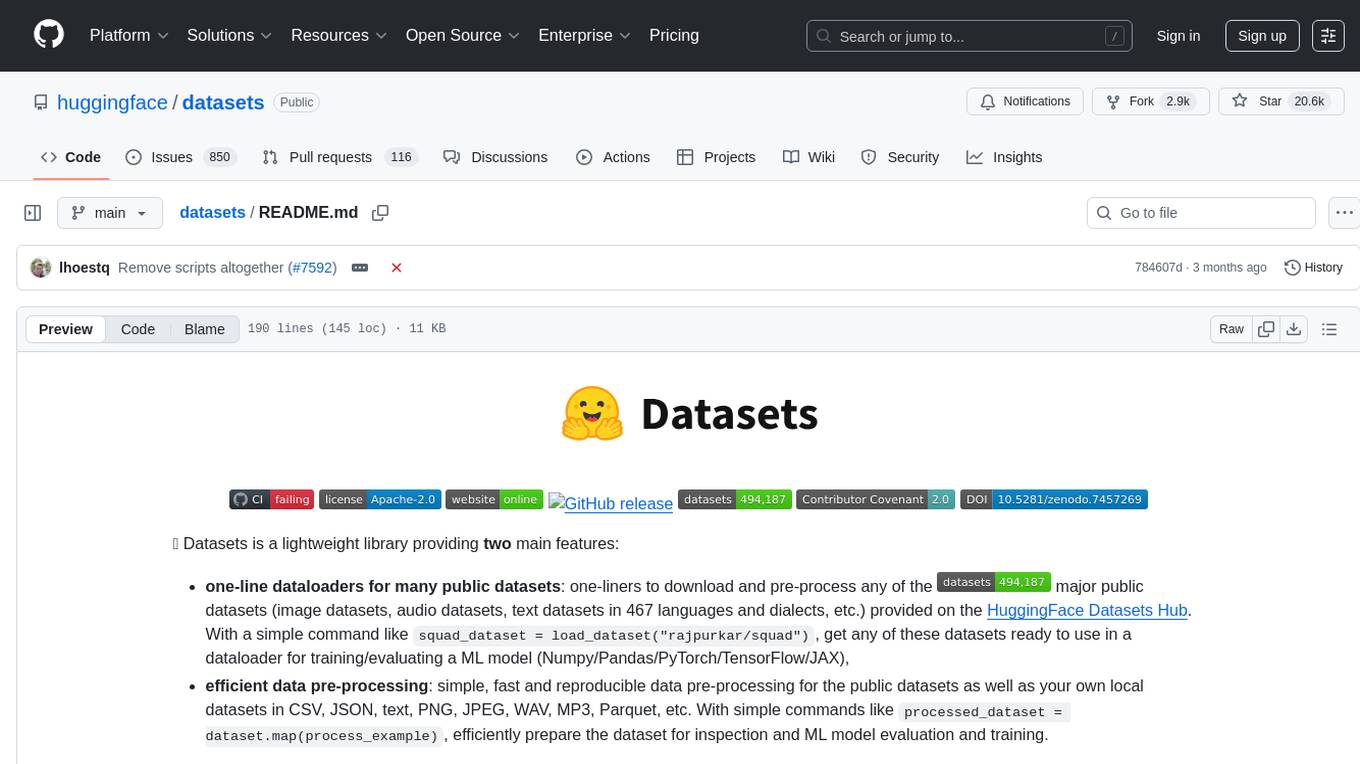
datasets
Datasets is a repository that provides a collection of various datasets for machine learning and data analysis projects. It includes datasets in different formats such as CSV, JSON, and Excel, covering a wide range of topics including finance, healthcare, marketing, and more. The repository aims to help data scientists, researchers, and students access high-quality datasets for training models, conducting experiments, and exploring data analysis techniques.
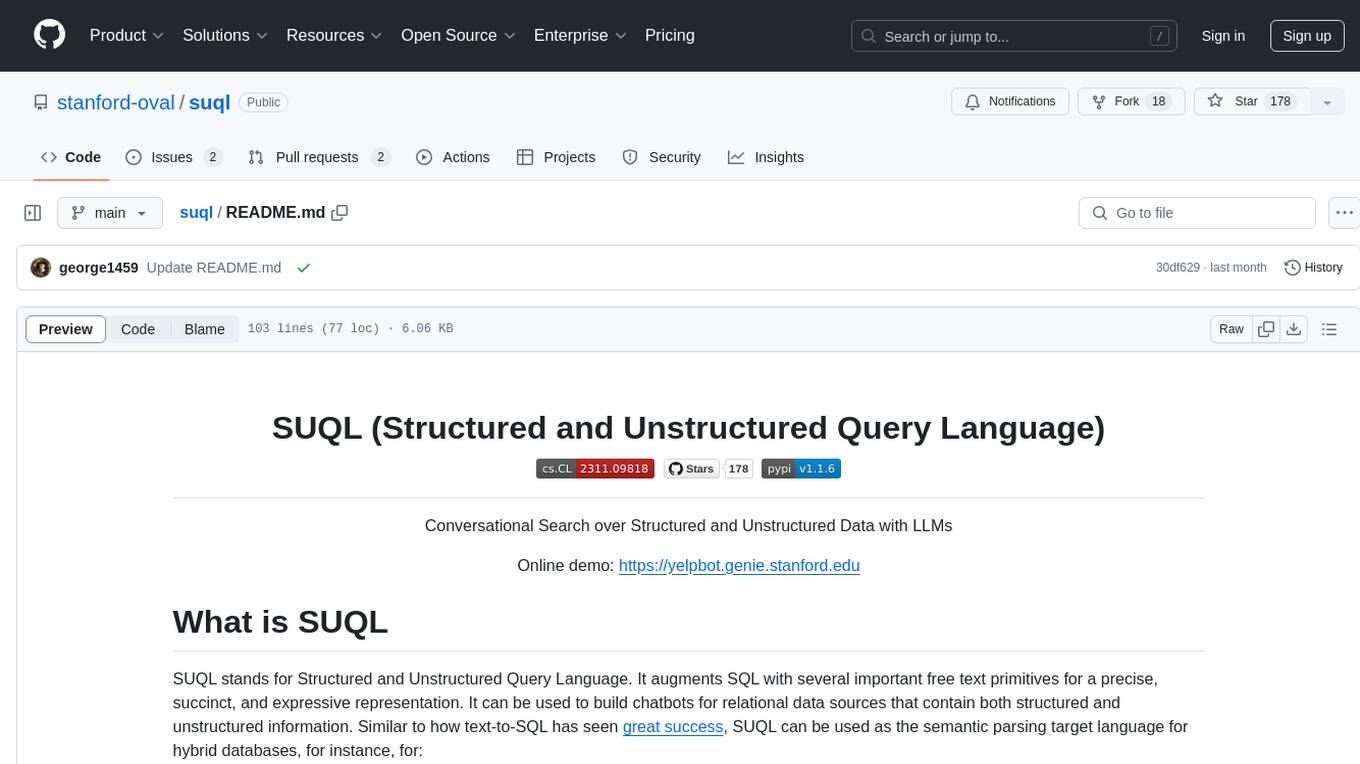
suql
SUQL (Structured and Unstructured Query Language) is a tool that augments SQL with free text primitives for building chatbots that can interact with relational data sources containing both structured and unstructured information. It seamlessly integrates retrieval models, large language models (LLMs), and traditional SQL to provide a clean interface for hybrid data access. SUQL supports optimizations to minimize expensive LLM calls, scalability to large databases with PostgreSQL, and general SQL operations like JOINs and GROUP BYs.
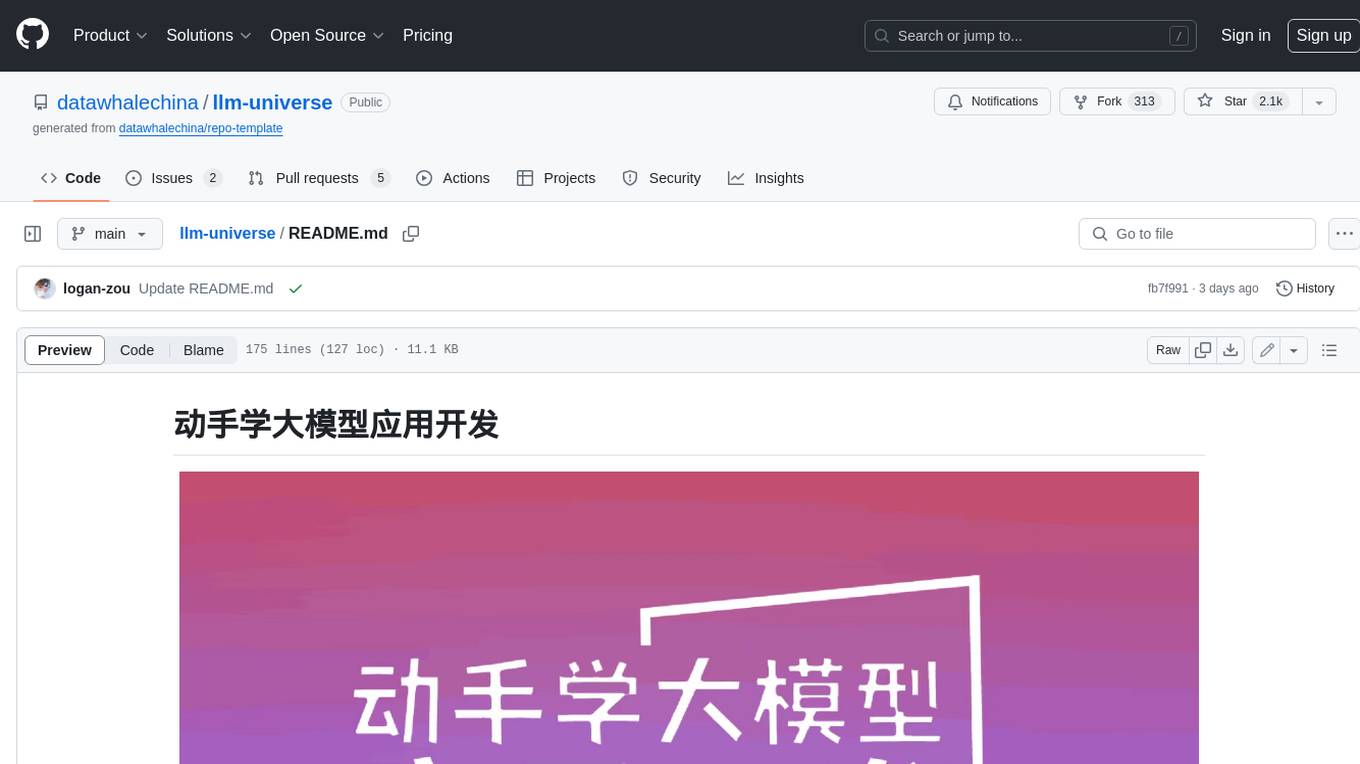
llm-universe
This project is a tutorial on developing large model applications for novice developers. It aims to provide a comprehensive introduction to large model development, focusing on Alibaba Cloud servers and integrating personal knowledge assistant projects. The tutorial covers the following topics: 1. **Introduction to Large Models**: A simplified introduction for novice developers on what large models are, their characteristics, what LangChain is, and how to develop an LLM application. 2. **How to Call Large Model APIs**: This section introduces various methods for calling APIs of well-known domestic and foreign large model products, including calling native APIs, encapsulating them as LangChain LLMs, and encapsulating them as Fastapi calls. It also provides a unified encapsulation for various large model APIs, such as Baidu Wenxin, Xunfei Xinghuo, and Zh譜AI. 3. **Knowledge Base Construction**: Loading, processing, and vector database construction of different types of knowledge base documents. 4. **Building RAG Applications**: Integrating LLM into LangChain to build a retrieval question and answer chain, and deploying applications using Streamlit. 5. **Verification and Iteration**: How to implement verification and iteration in large model development, and common evaluation methods. The project consists of three main parts: 1. **Introduction to LLM Development**: A simplified version of V1 aims to help beginners get started with LLM development quickly and conveniently, understand the general process of LLM development, and build a simple demo. 2. **LLM Development Techniques**: More advanced LLM development techniques, including but not limited to: Prompt Engineering, processing of multiple types of source data, optimizing retrieval, recall ranking, Agent framework, etc. 3. **LLM Application Examples**: Introduce some successful open source cases, analyze the ideas, core concepts, and implementation frameworks of these application examples from the perspective of this course, and help beginners understand what kind of applications they can develop through LLM. Currently, the first part has been completed, and everyone is welcome to read and learn; the second and third parts are under creation. **Directory Structure Description**: requirements.txt: Installation dependencies in the official environment notebook: Notebook source code file docs: Markdown documentation file figures: Pictures data_base: Knowledge base source file used
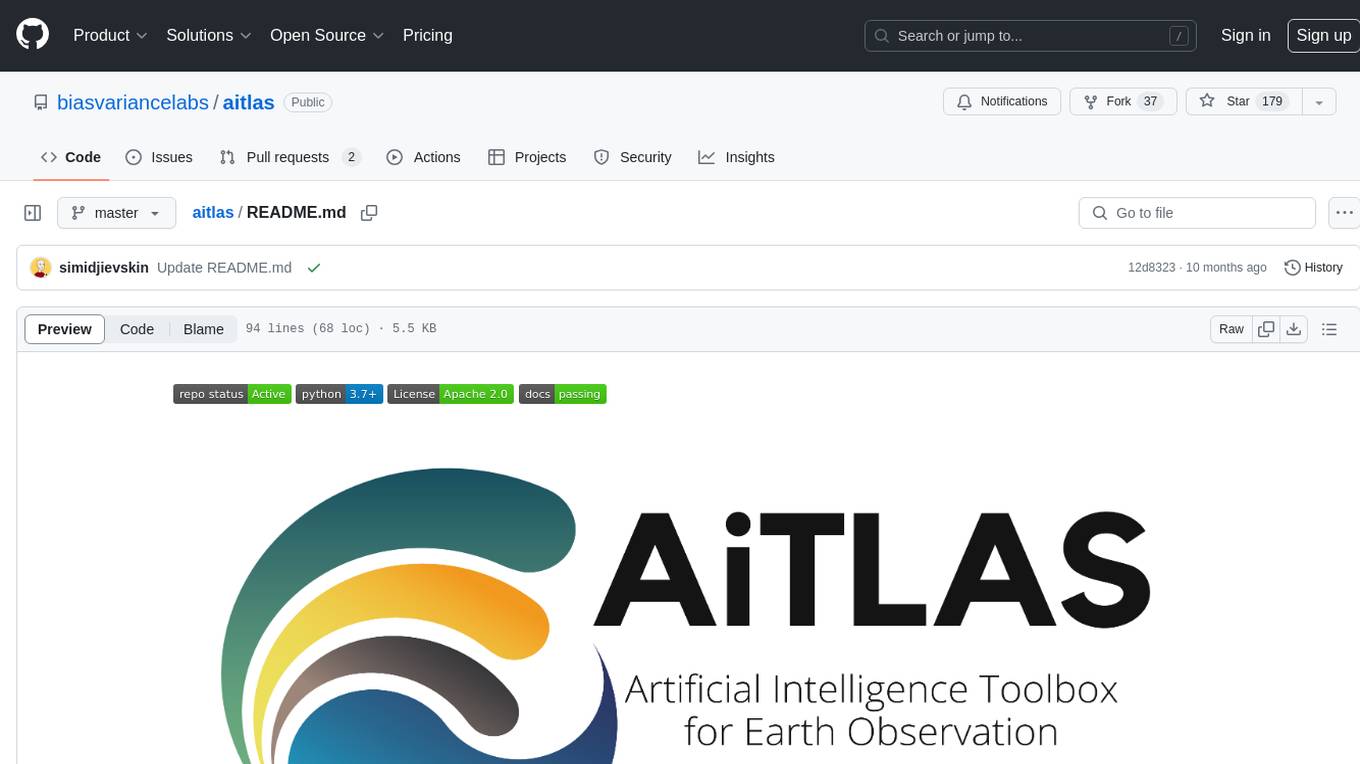
aitlas
The AiTLAS toolbox (Artificial Intelligence Toolbox for Earth Observation) includes state-of-the-art machine learning methods for exploratory and predictive analysis of satellite imagery as well as a repository of AI-ready Earth Observation (EO) datasets. It can be easily applied for a variety of Earth Observation tasks, such as land use and cover classification, crop type prediction, localization of specific objects (semantic segmentation), etc. The main goal of AiTLAS is to facilitate better usability and adoption of novel AI methods (and models) by EO experts, while offering easy access and standardized format of EO datasets to AI experts which allows benchmarking of various existing and novel AI methods tailored for EO data.

embedJs
EmbedJs is a NodeJS framework that simplifies RAG application development by efficiently processing unstructured data. It segments data, creates relevant embeddings, and stores them in a vector database for quick retrieval.
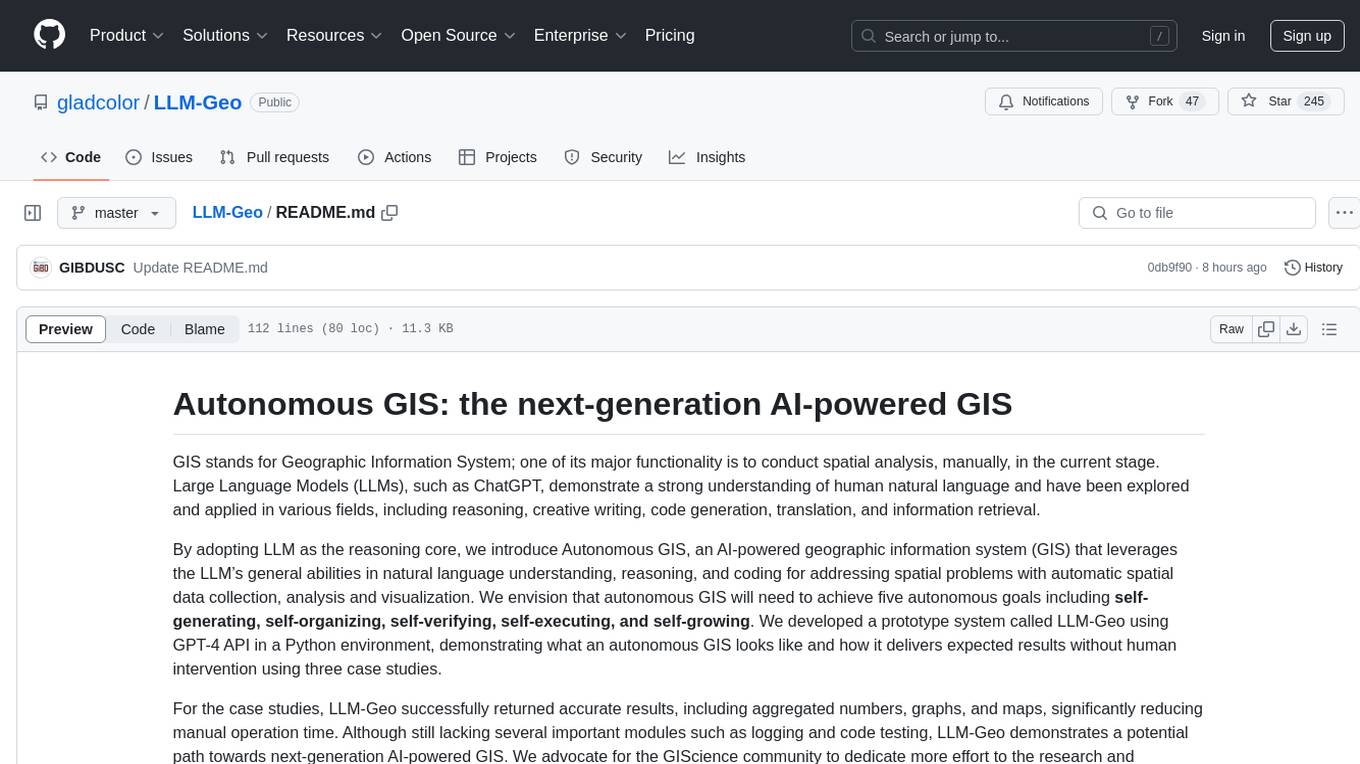
LLM-Geo
LLM-Geo is an AI-powered geographic information system (GIS) that leverages Large Language Models (LLMs) for automatic spatial data collection, analysis, and visualization. By adopting LLM as the reasoning core, it addresses spatial problems with self-generating, self-organizing, self-verifying, self-executing, and self-growing capabilities. The tool aims to make spatial analysis easier, faster, and more accessible by reducing manual operation time and delivering accurate results through case studies. It uses GPT-4 API in a Python environment and advocates for further research and development in autonomous GIS.
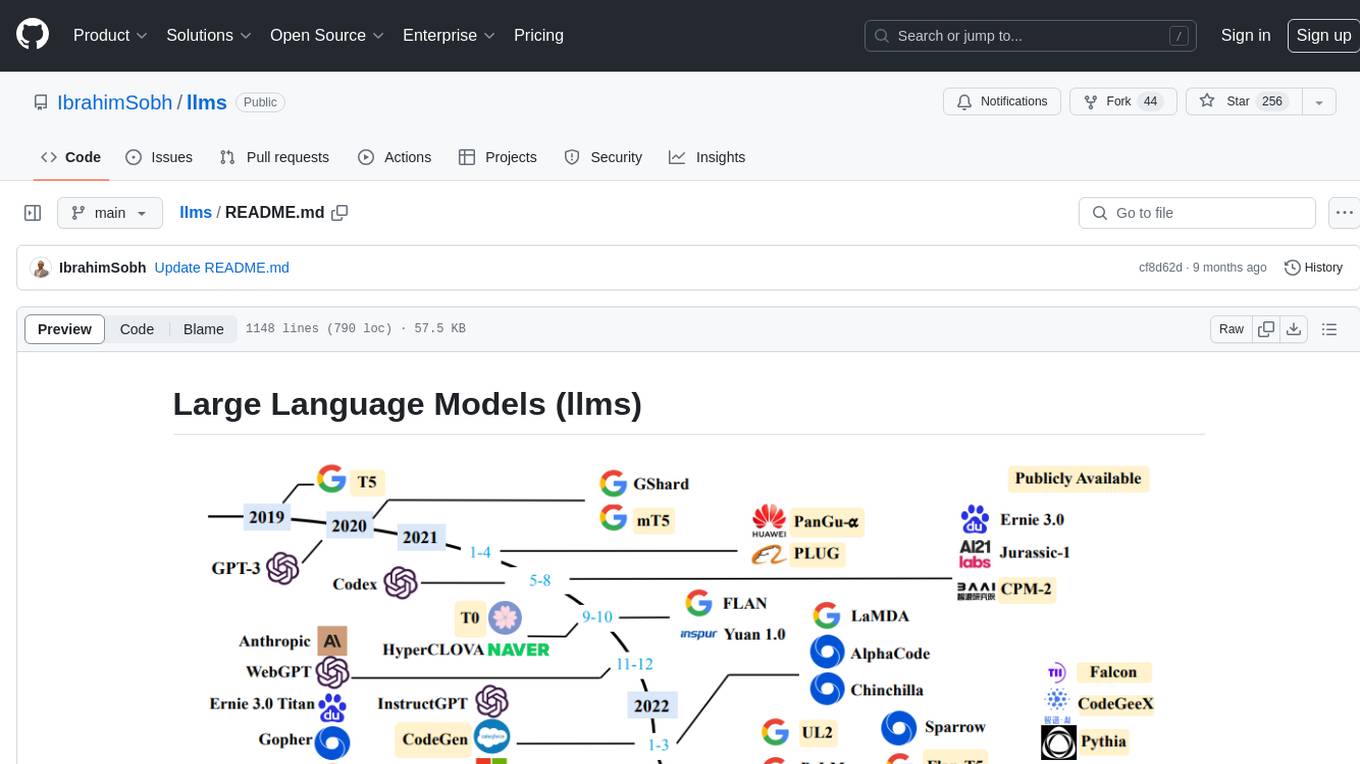
llms
The 'llms' repository is a comprehensive guide on Large Language Models (LLMs), covering topics such as language modeling, applications of LLMs, statistical language modeling, neural language models, conditional language models, evaluation methods, transformer-based language models, practical LLMs like GPT and BERT, prompt engineering, fine-tuning LLMs, retrieval augmented generation, AI agents, and LLMs for computer vision. The repository provides detailed explanations, examples, and tools for working with LLMs.
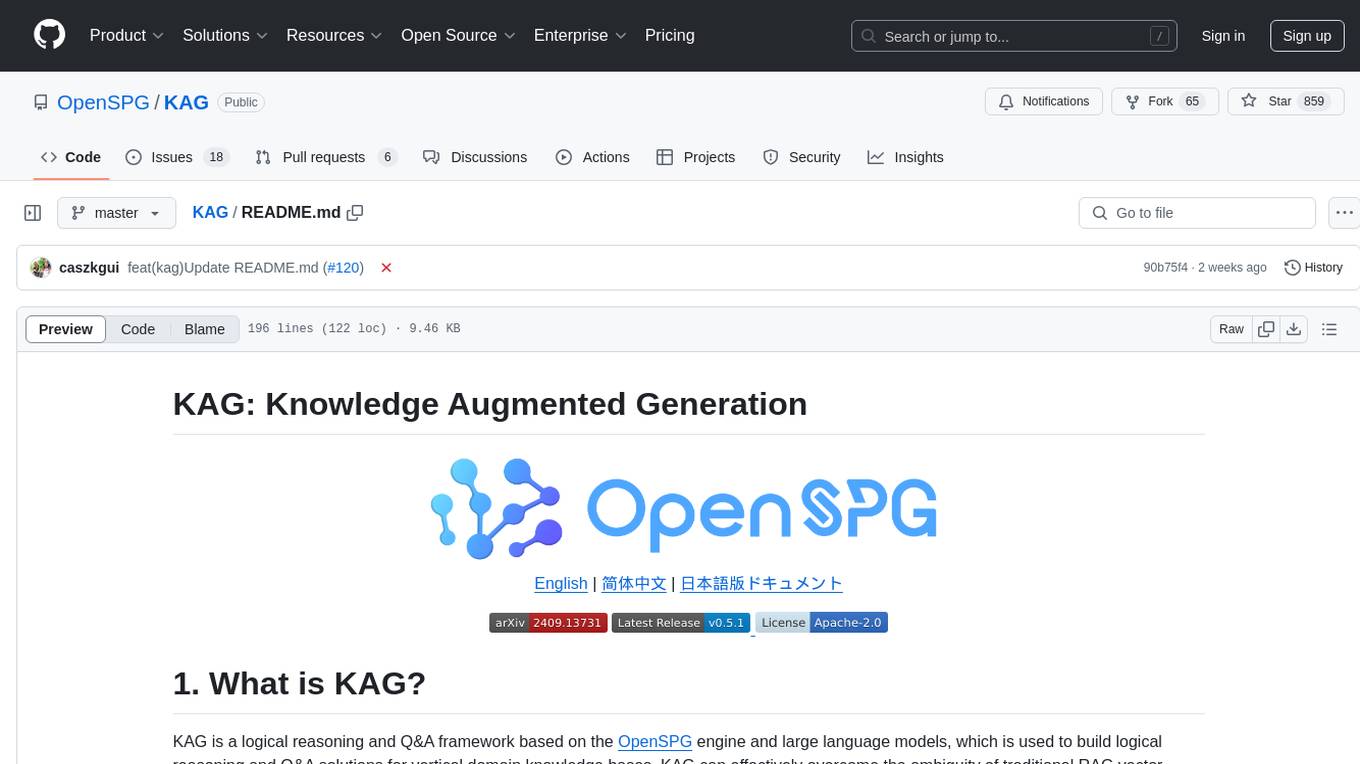
KAG
KAG is a logical reasoning and Q&A framework based on the OpenSPG engine and large language models. It is used to build logical reasoning and Q&A solutions for vertical domain knowledge bases. KAG supports logical reasoning, multi-hop fact Q&A, and integrates knowledge and chunk mutual indexing structure, conceptual semantic reasoning, schema-constrained knowledge construction, and logical form-guided hybrid reasoning and retrieval. The framework includes kg-builder for knowledge representation and kg-solver for logical symbol-guided hybrid solving and reasoning engine. KAG aims to enhance LLM service framework in professional domains by integrating logical and factual characteristics of KGs.
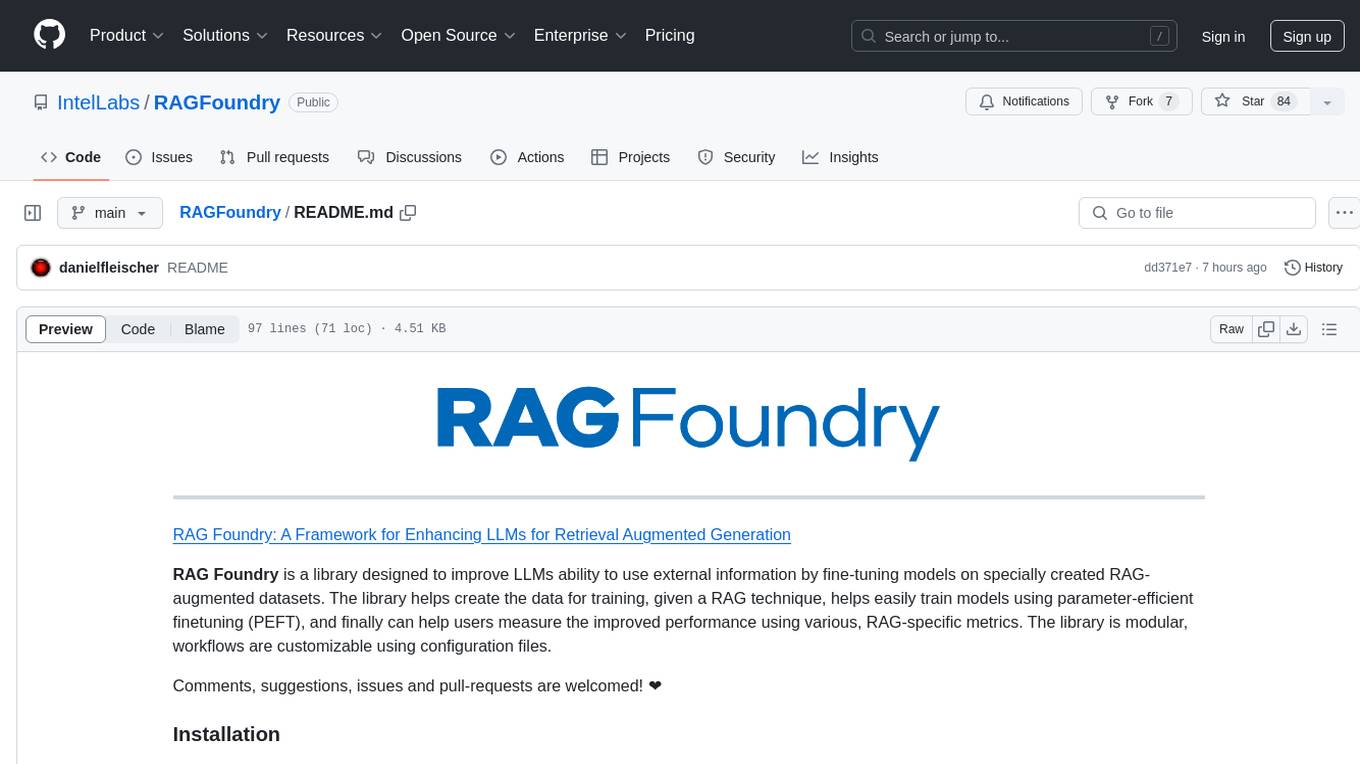
RAGFoundry
RAG Foundry is a library designed to enhance Large Language Models (LLMs) by fine-tuning models on RAG-augmented datasets. It helps create training data, train models using parameter-efficient finetuning (PEFT), and measure performance using RAG-specific metrics. The library is modular, customizable using configuration files, and facilitates prototyping with various RAG settings and configurations for tasks like data processing, retrieval, training, inference, and evaluation.
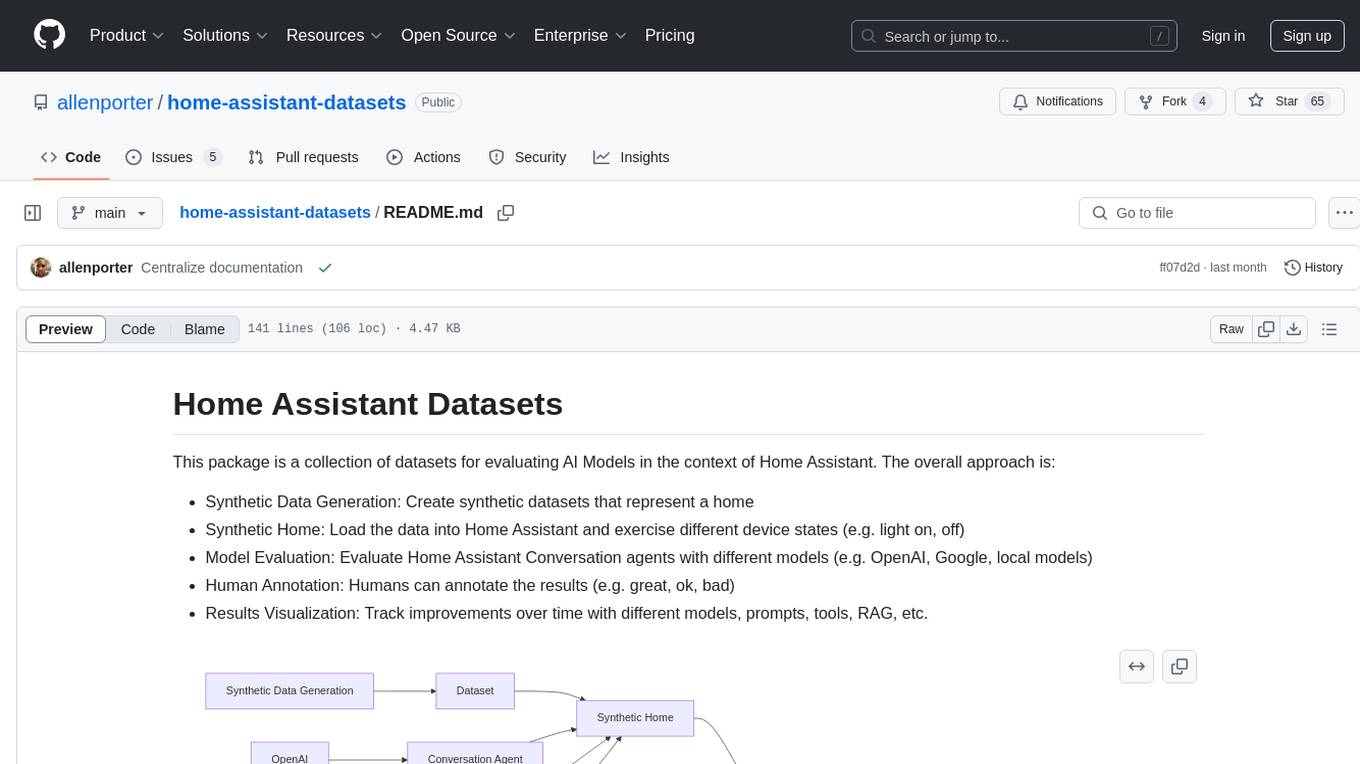
home-assistant-datasets
This package provides a collection of datasets for evaluating AI Models in the context of Home Assistant. It includes synthetic data generation, loading data into Home Assistant, model evaluation with different conversation agents, human annotation of results, and visualization of improvements over time. The datasets cover home descriptions, area descriptions, device descriptions, and summaries that can be performed on a home. The tool aims to build datasets for future training purposes.
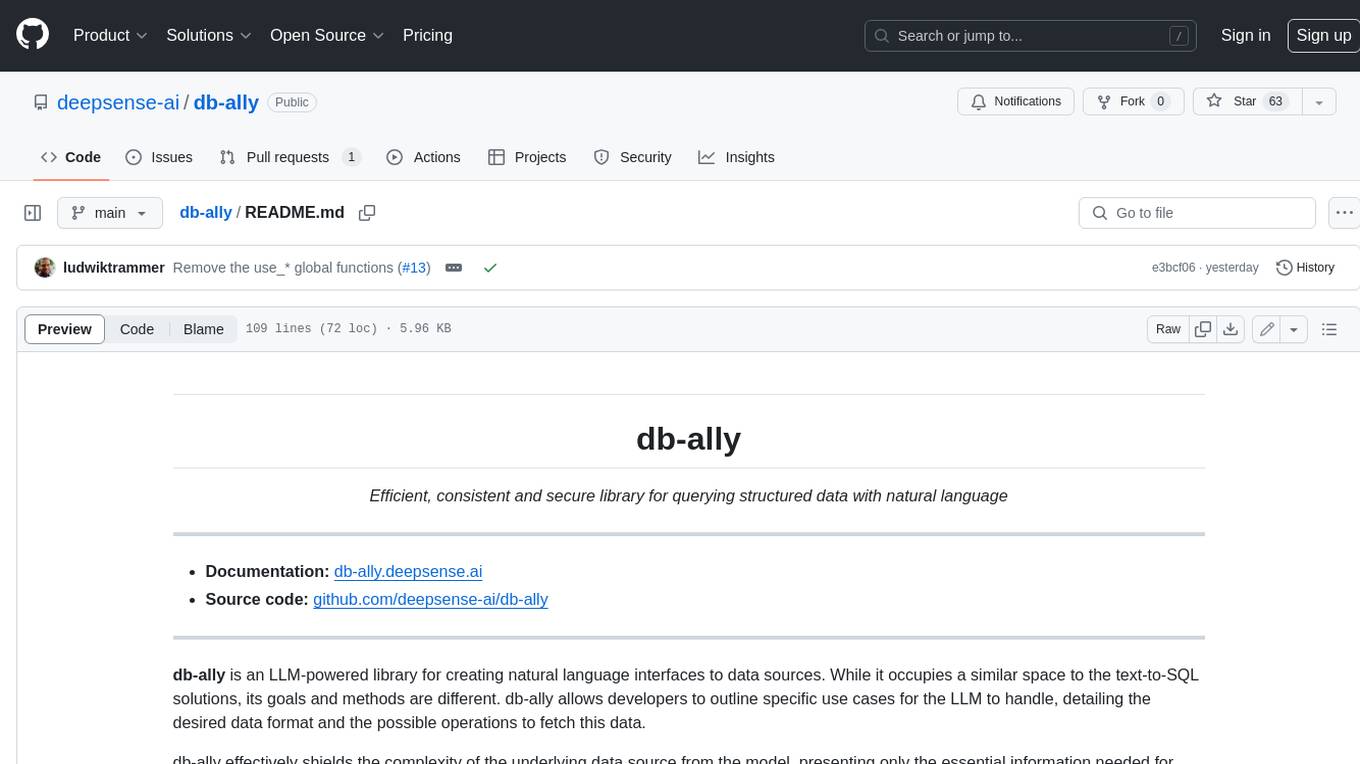
db-ally
db-ally is a library for creating natural language interfaces to data sources. It allows developers to outline specific use cases for a large language model (LLM) to handle, detailing the desired data format and the possible operations to fetch this data. db-ally effectively shields the complexity of the underlying data source from the model, presenting only the essential information needed for solving the specific use cases. Instead of generating arbitrary SQL, the model is asked to generate responses in a simplified query language.
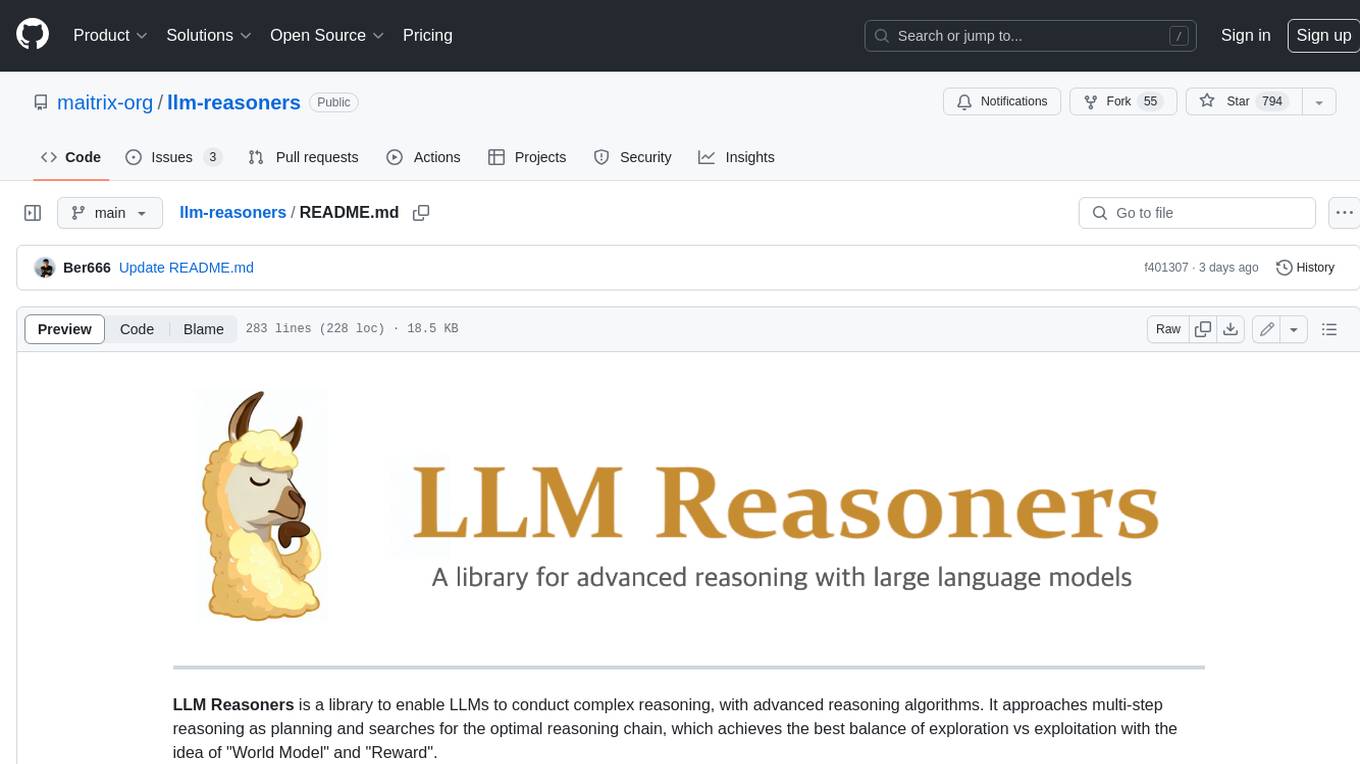
llm-reasoners
LLM Reasoners is a library that enables LLMs to conduct complex reasoning, with advanced reasoning algorithms. It approaches multi-step reasoning as planning and searches for the optimal reasoning chain, which achieves the best balance of exploration vs exploitation with the idea of "World Model" and "Reward". Given any reasoning problem, simply define the reward function and an optional world model (explained below), and let LLM reasoners take care of the rest, including Reasoning Algorithms, Visualization, LLM calling, and more!
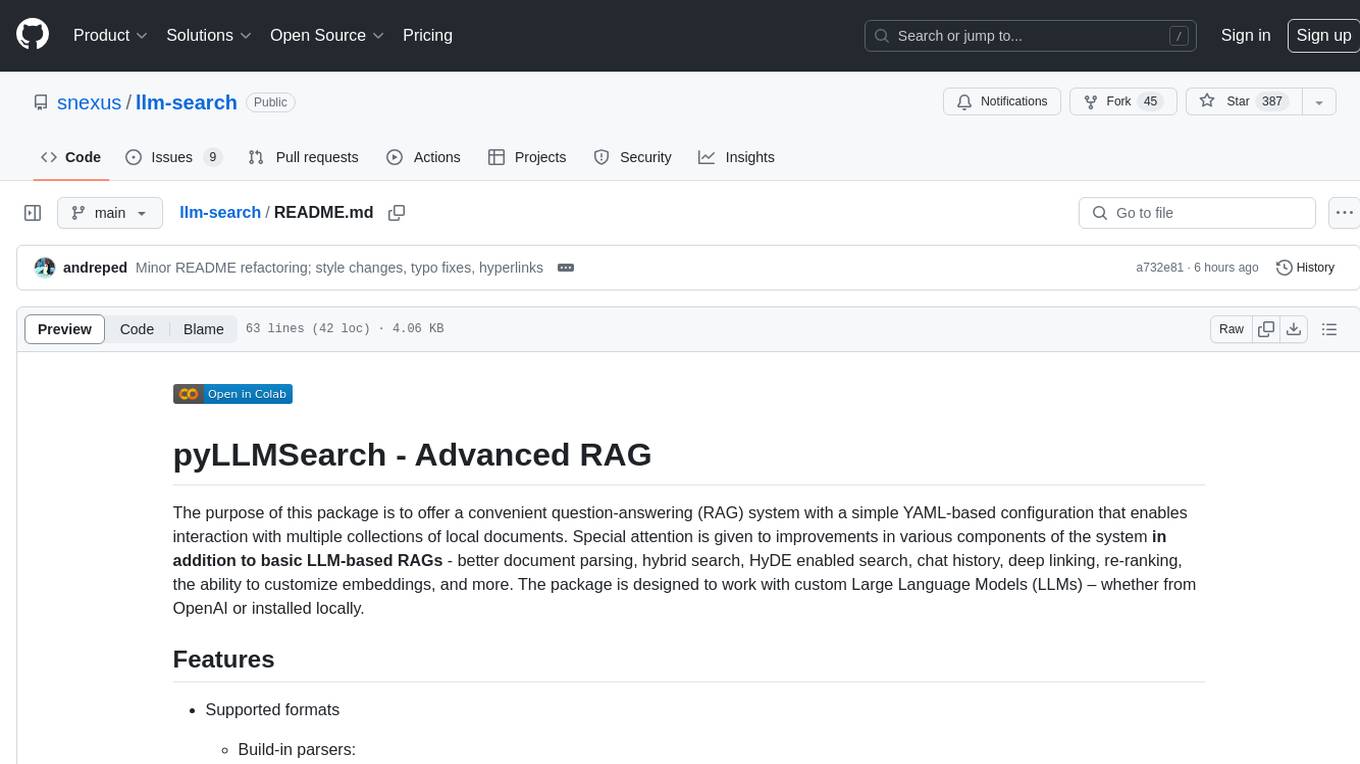
llm-search
pyLLMSearch is an advanced RAG system that offers a convenient question-answering system with a simple YAML-based configuration. It enables interaction with multiple collections of local documents, with improvements in document parsing, hybrid search, chat history, deep linking, re-ranking, customizable embeddings, and more. The package is designed to work with custom Large Language Models (LLMs) from OpenAI or installed locally. It supports various document formats, incremental embedding updates, dense and sparse embeddings, multiple embedding models, 'Retrieve and Re-rank' strategy, HyDE (Hypothetical Document Embeddings), multi-querying, chat history, and interaction with embedded documents using different models. It also offers simple CLI and web interfaces, deep linking, offline response saving, and an experimental API.
For similar tasks

FalkorDB
FalkorDB is the first queryable Property Graph database to use sparse matrices to represent the adjacency matrix in graphs and linear algebra to query the graph. Primary features: * Adopting the Property Graph Model * Nodes (vertices) and Relationships (edges) that may have attributes * Nodes can have multiple labels * Relationships have a relationship type * Graphs represented as sparse adjacency matrices * OpenCypher with proprietary extensions as a query language * Queries are translated into linear algebra expressions
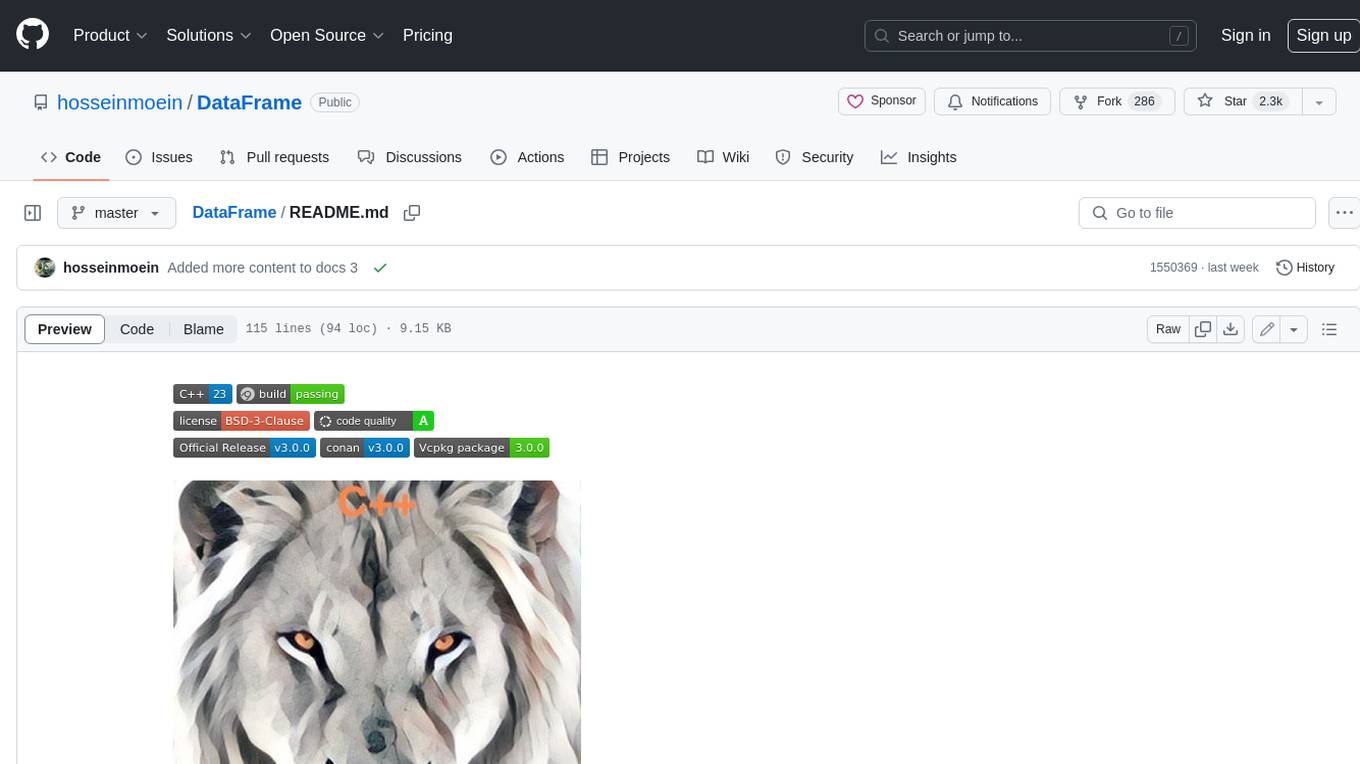
DataFrame
DataFrame is a C++ analytical library designed for data analysis similar to libraries in Python and R. It allows you to slice, join, merge, group-by, and perform various statistical, summarization, financial, and ML algorithms on your data. DataFrame also includes a large collection of analytical algorithms in form of visitors, ranging from basic stats to more involved analysis. You can easily add your own algorithms as well. DataFrame employs extensive multithreading in almost all its APIs, making it suitable for analyzing large datasets. Key principles followed in the library include supporting any type without needing new code, avoiding pointer chasing, having all column data in contiguous memory space, minimizing space usage, avoiding data copying, using multi-threading judiciously, and not protecting the user against garbage in, garbage out.
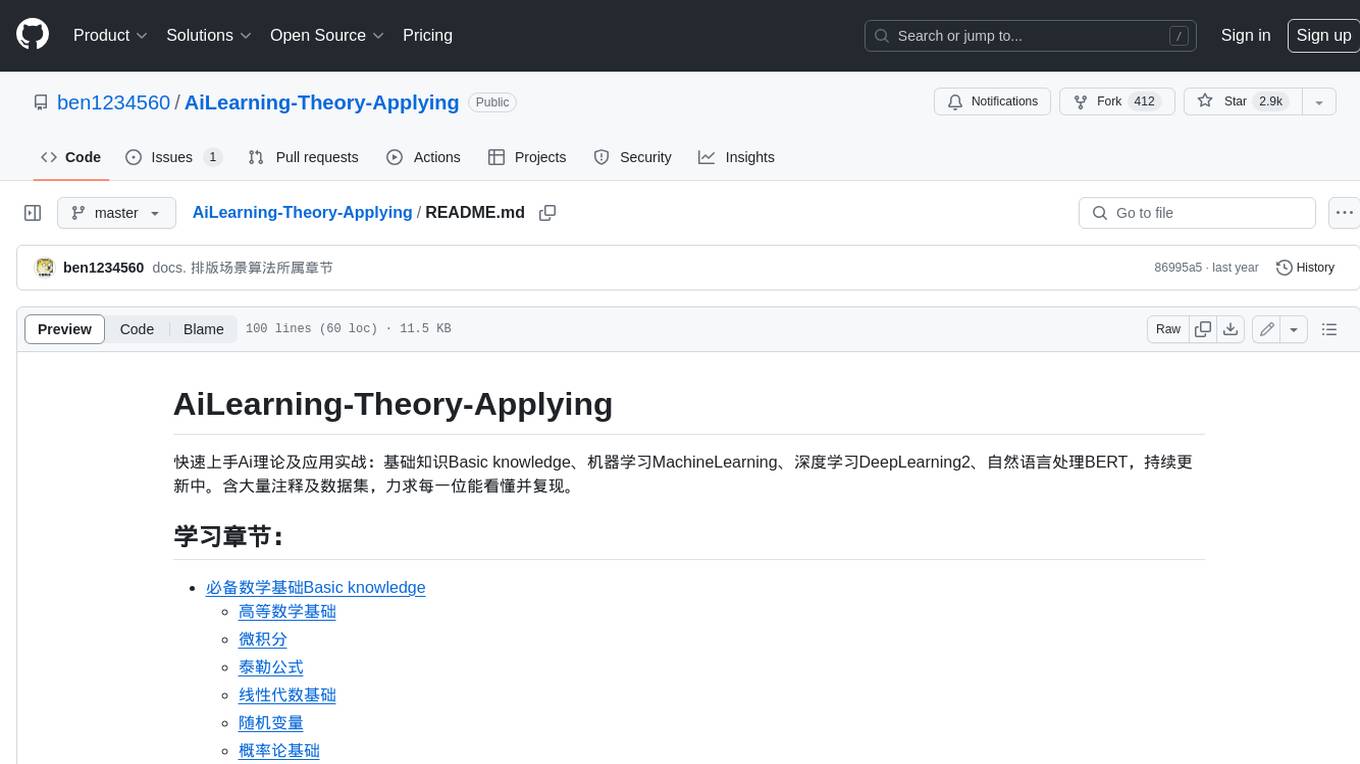
AiLearning-Theory-Applying
This repository provides a comprehensive guide to understanding and applying artificial intelligence (AI) theory, including basic knowledge, machine learning, deep learning, and natural language processing (BERT). It features detailed explanations, annotated code, and datasets to help users grasp the concepts and implement them in practice. The repository is continuously updated to ensure the latest information and best practices are covered.
For similar jobs

lollms-webui
LoLLMs WebUI (Lord of Large Language Multimodal Systems: One tool to rule them all) is a user-friendly interface to access and utilize various LLM (Large Language Models) and other AI models for a wide range of tasks. With over 500 AI expert conditionings across diverse domains and more than 2500 fine tuned models over multiple domains, LoLLMs WebUI provides an immediate resource for any problem, from car repair to coding assistance, legal matters, medical diagnosis, entertainment, and more. The easy-to-use UI with light and dark mode options, integration with GitHub repository, support for different personalities, and features like thumb up/down rating, copy, edit, and remove messages, local database storage, search, export, and delete multiple discussions, make LoLLMs WebUI a powerful and versatile tool.

Azure-Analytics-and-AI-Engagement
The Azure-Analytics-and-AI-Engagement repository provides packaged Industry Scenario DREAM Demos with ARM templates (Containing a demo web application, Power BI reports, Synapse resources, AML Notebooks etc.) that can be deployed in a customer’s subscription using the CAPE tool within a matter of few hours. Partners can also deploy DREAM Demos in their own subscriptions using DPoC.
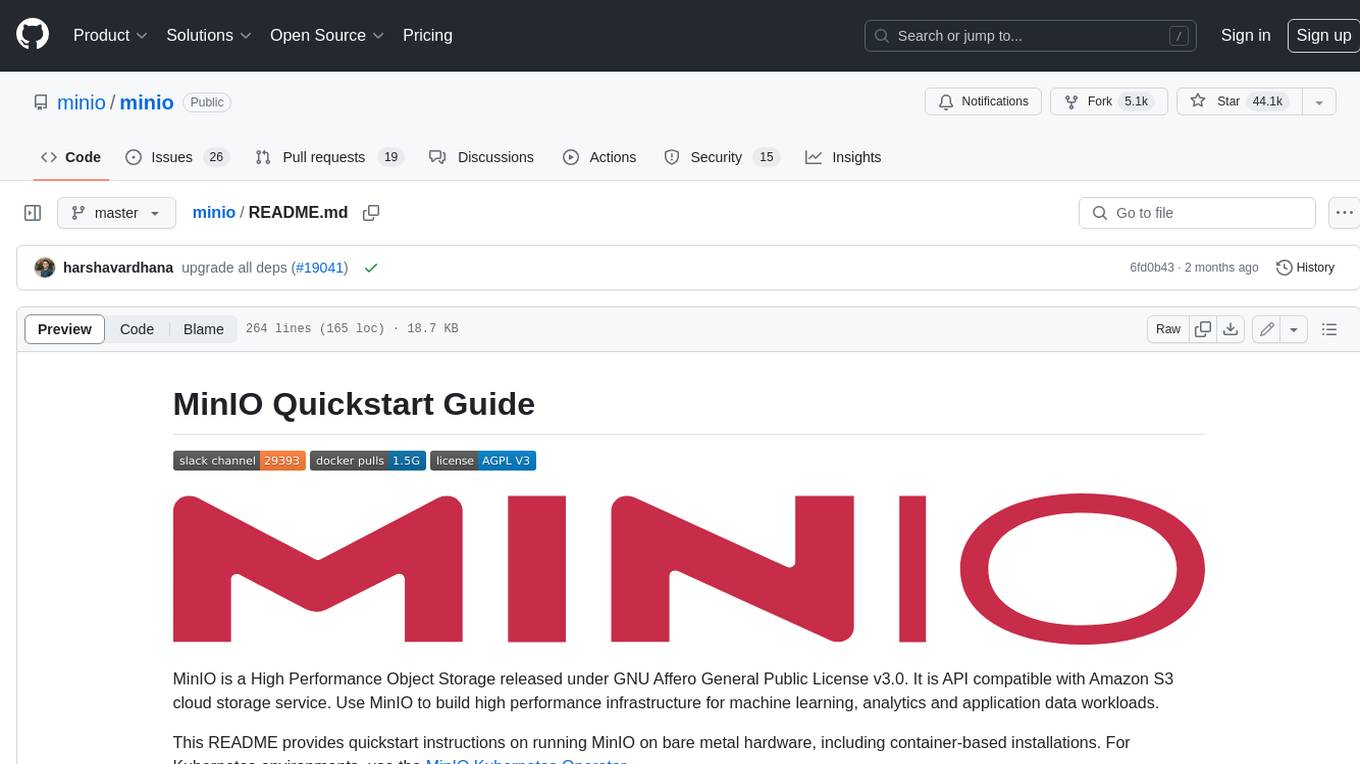
minio
MinIO is a High Performance Object Storage released under GNU Affero General Public License v3.0. It is API compatible with Amazon S3 cloud storage service. Use MinIO to build high performance infrastructure for machine learning, analytics and application data workloads.
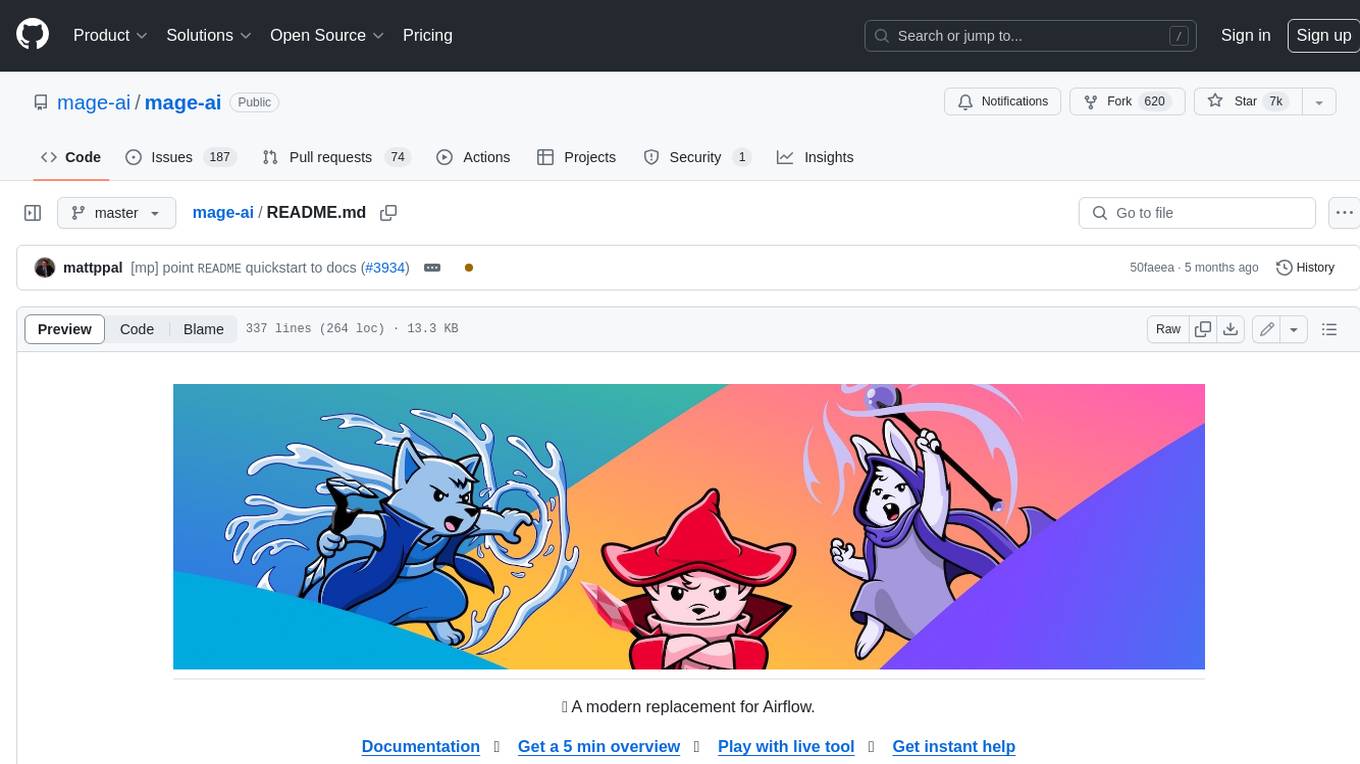
mage-ai
Mage is an open-source data pipeline tool for transforming and integrating data. It offers an easy developer experience, engineering best practices built-in, and data as a first-class citizen. Mage makes it easy to build, preview, and launch data pipelines, and provides observability and scaling capabilities. It supports data integrations, streaming pipelines, and dbt integration.
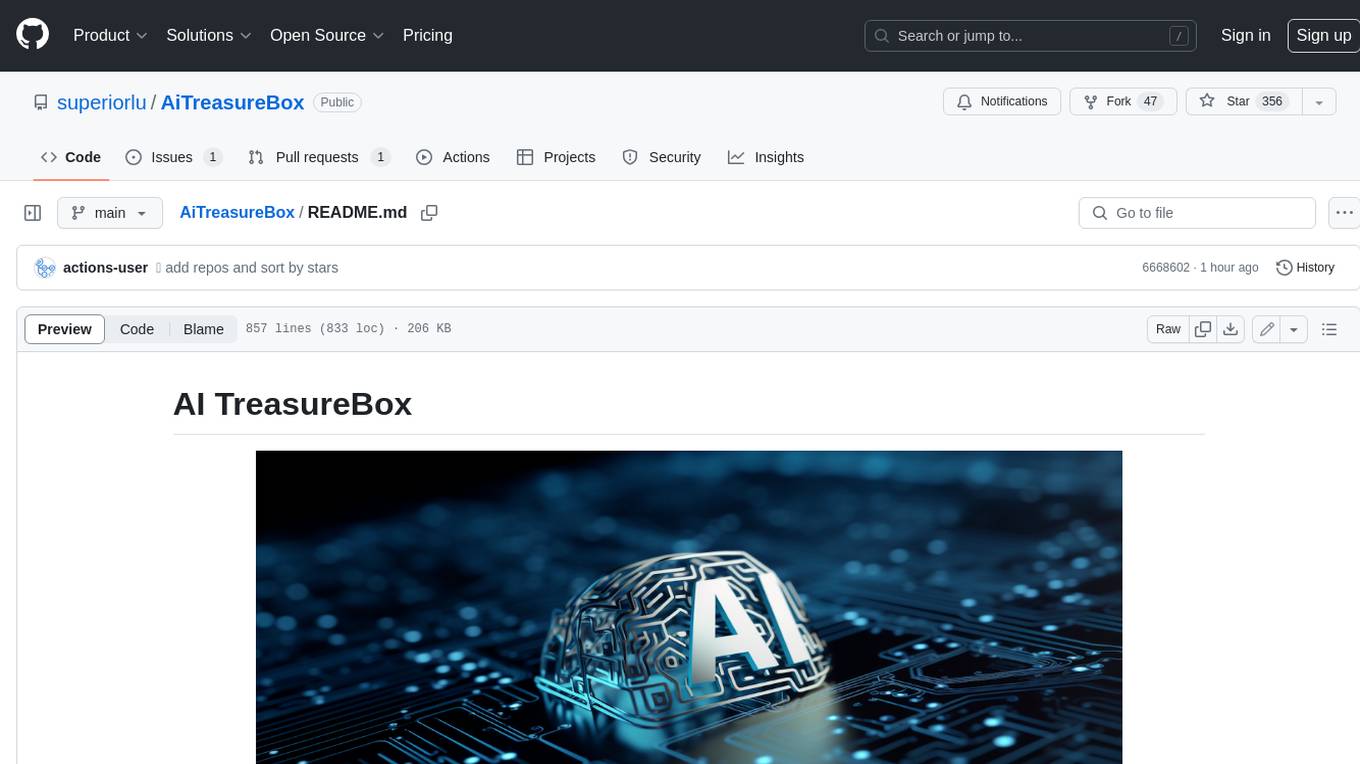
AiTreasureBox
AiTreasureBox is a versatile AI tool that provides a collection of pre-trained models and algorithms for various machine learning tasks. It simplifies the process of implementing AI solutions by offering ready-to-use components that can be easily integrated into projects. With AiTreasureBox, users can quickly prototype and deploy AI applications without the need for extensive knowledge in machine learning or deep learning. The tool covers a wide range of tasks such as image classification, text generation, sentiment analysis, object detection, and more. It is designed to be user-friendly and accessible to both beginners and experienced developers, making AI development more efficient and accessible to a wider audience.

tidb
TiDB is an open-source distributed SQL database that supports Hybrid Transactional and Analytical Processing (HTAP) workloads. It is MySQL compatible and features horizontal scalability, strong consistency, and high availability.
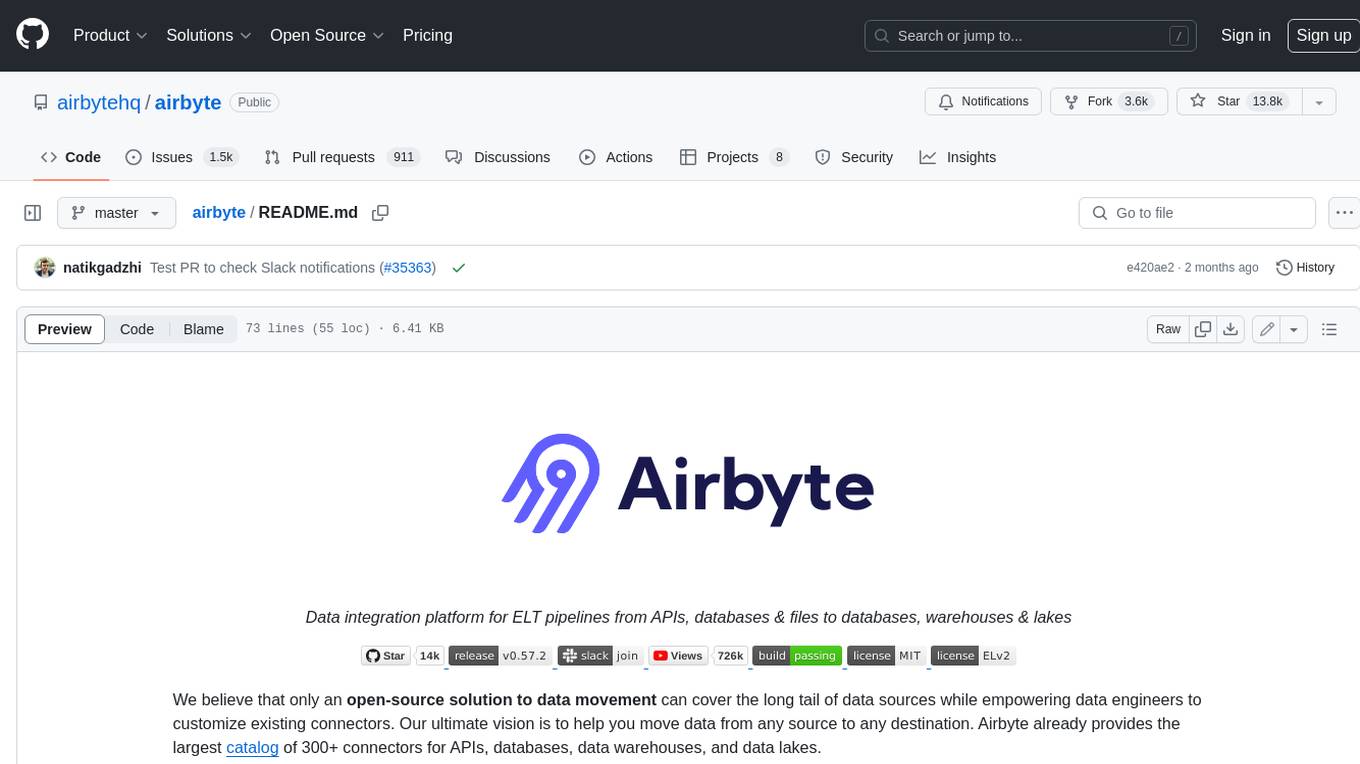
airbyte
Airbyte is an open-source data integration platform that makes it easy to move data from any source to any destination. With Airbyte, you can build and manage data pipelines without writing any code. Airbyte provides a library of pre-built connectors that make it easy to connect to popular data sources and destinations. You can also create your own connectors using Airbyte's no-code Connector Builder or low-code CDK. Airbyte is used by data engineers and analysts at companies of all sizes to build and manage their data pipelines.

labelbox-python
Labelbox is a data-centric AI platform for enterprises to develop, optimize, and use AI to solve problems and power new products and services. Enterprises use Labelbox to curate data, generate high-quality human feedback data for computer vision and LLMs, evaluate model performance, and automate tasks by combining AI and human-centric workflows. The academic & research community uses Labelbox for cutting-edge AI research.



